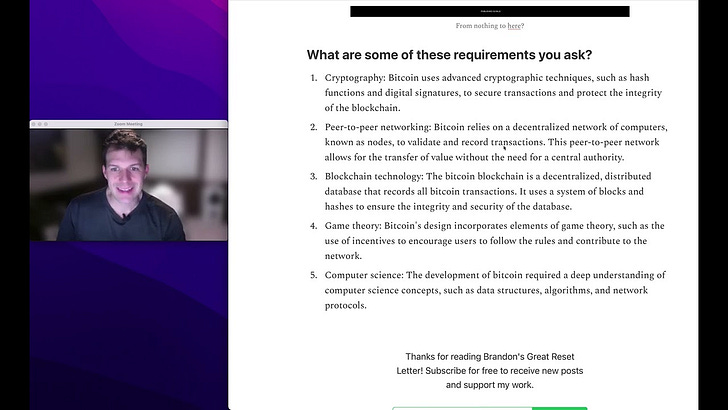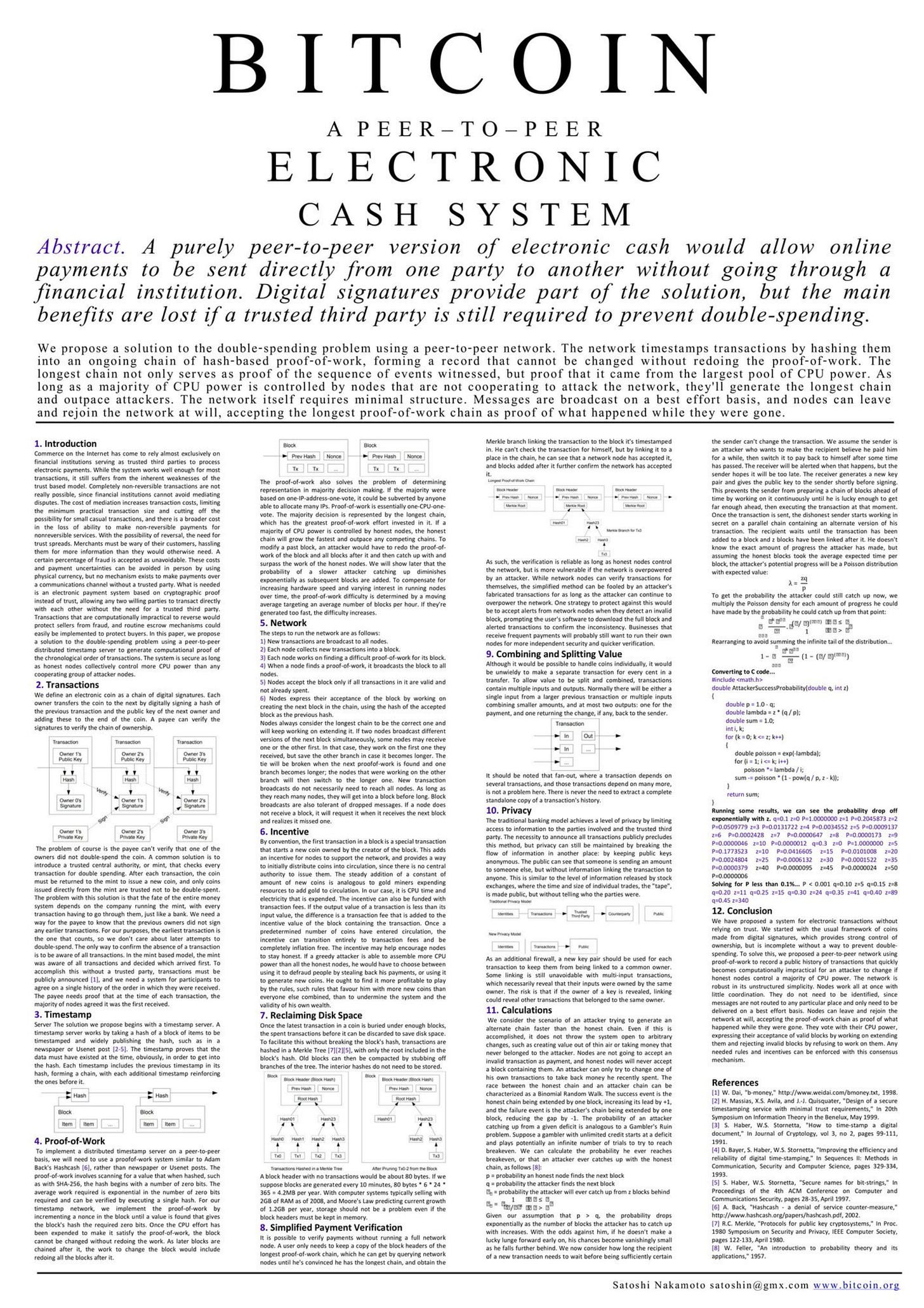(Listen to audio version of me reading👆)
In the beginning…
On January 3, 2009, a software developer by the pseudonym of Satoshi Nakamoto released the first version of the bitcoin software. This event marked the beginning of a new era in digital currency and the creation of the first-ever bitcoin block, known as the "genesis block."
The concept of bitcoin or a digitally native currency had been floating around for years before the release of bitcoin, with many individuals and groups attempting to create a digital currency that was decentralized and not controlled by any government or financial institution. However, it was Satoshi Nakamoto who finally succeeded in creating a system that met these requirements.
What are some of these requirements you ask?
Cryptography: Bitcoin uses advanced cryptographic techniques, such as hash functions and digital signatures, to secure transactions and protect the integrity of the blockchain.
Peer-to-peer networking: Bitcoin relies on a decentralized network of computers, known as nodes, to validate and record transactions. This peer-to-peer network allows for the transfer of value without the need for a central authority.
Blockchain technology: The bitcoin blockchain is a decentralized, distributed database that records all bitcoin transactions. It uses a system of blocks and hashes to ensure the integrity and security of the database.
Game theory: Bitcoin's design incorporates elements of game theory, such as the use of incentives to encourage users to follow the rules and contribute to the network.
Computer science: The development of bitcoin required a deep understanding of computer science concepts, such as data structures, algorithms, and network protocols.
The bitcoin software allows users to send and receive payments directly to each other, without the need for a central authority. Transactions are recorded on a decentralized network called the blockchain (we like to use time chain), which allows for transparency and prevents fraud.
The release of the bitcoin software and the creation of the genesis block were met with skepticism and disbelief by many in the financial world.
Much FUD…
Many experts predicted that the system would fail and that it was simply a passing fad. However, as more and more people began using bitcoin and the value of the currency began to rise, it became clear that this was not just a passing trend.
Today, bitcoin has become a household name and is widely accepted as a legitimate form of currency.
While there have been ups and downs in the value of bitcoin, 1 BTC = 1 BTC.
The network is at all time highs in many categories and stats.
The anniversary of the genesis block is an important moment in the history of bitcoin and is celebrated by many in the bitcoin community. It marks the beginning of a new era in digital currency and serves as a reminder of the potential of decentralized systems to disrupt traditional financial structures.
As we look back on the past 14 years of bitcoin's existence, it is clear that it has come a long way since the release of the genesis block. We are still very early in terms of education and adoption but exponential growth takes a bit of time with all technology.
Gradually then suddenly.
I do believe we will look back at this date 100 years from now like we do July 4, 1776.
Here are five facts about the day of the bitcoin genesis block that you might not know:
The first block in the bitcoin blockchain, known as the genesis block, was created on January 3, 2009 by the software developer known as Satoshi Nakamoto.
The first block in the bitcoin blockchain contains a message from Satoshi Nakamoto: "The Times 03/Jan/2009 Chancellor on brink of second bailout for banks." This message is believed to be a reference to a headline in the UK newspaper The Times, which was critical of the financial industry.
The genesis block is unique in that it has no predecessor block, as it is the first block in the blockchain. All subsequent blocks are linked to the genesis block through a process called "hashing."
The creation of the genesis block marked the beginning of a new era in digital currency and the start of the bitcoin network. Satoshi did not pre-mine the coin.
The anniversary of the genesis block, January 3, is celebrated by many in the bitcoin community as Bitcoin Genesis Block Day.
Satoshi is thought to have mined around 1,100,000 bitcoin that have never moved from their wallets.
Celebrate by taking some sats off of exchanges and in to self custody today, or buy some sats if you are on zero. Then take them off the exchange and put them in your own custody!
Stay strong,
Brandon






